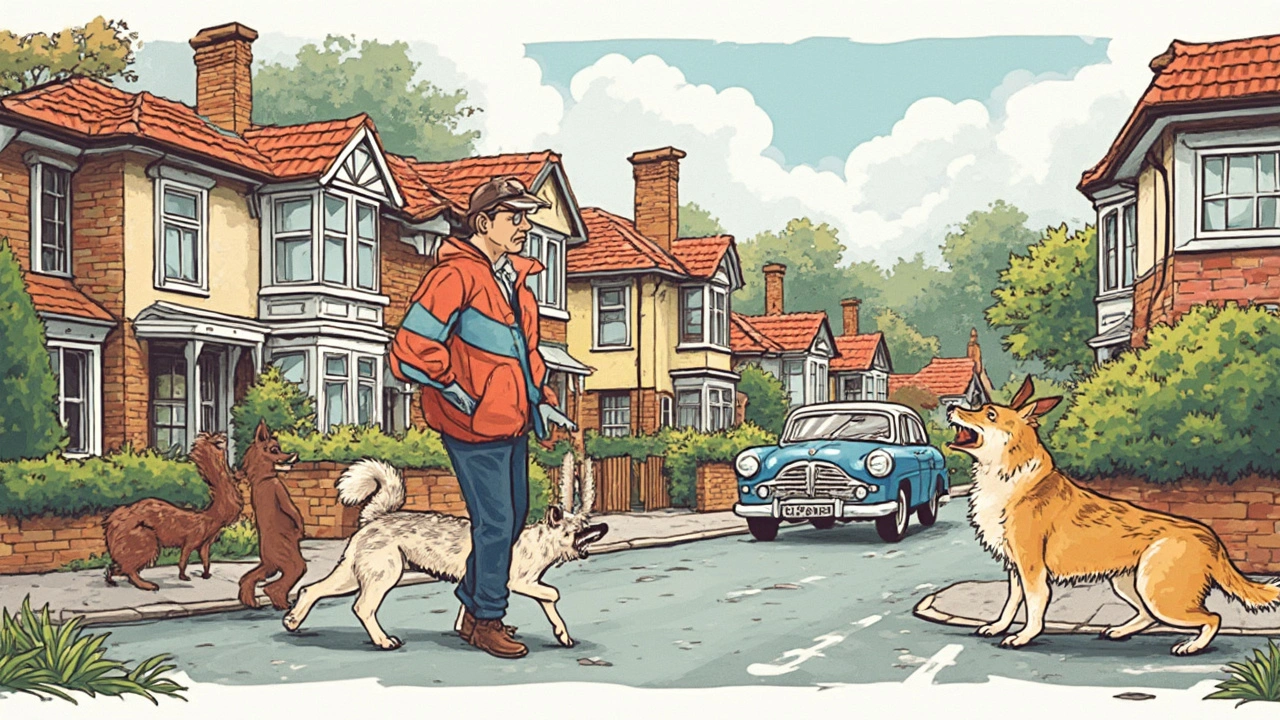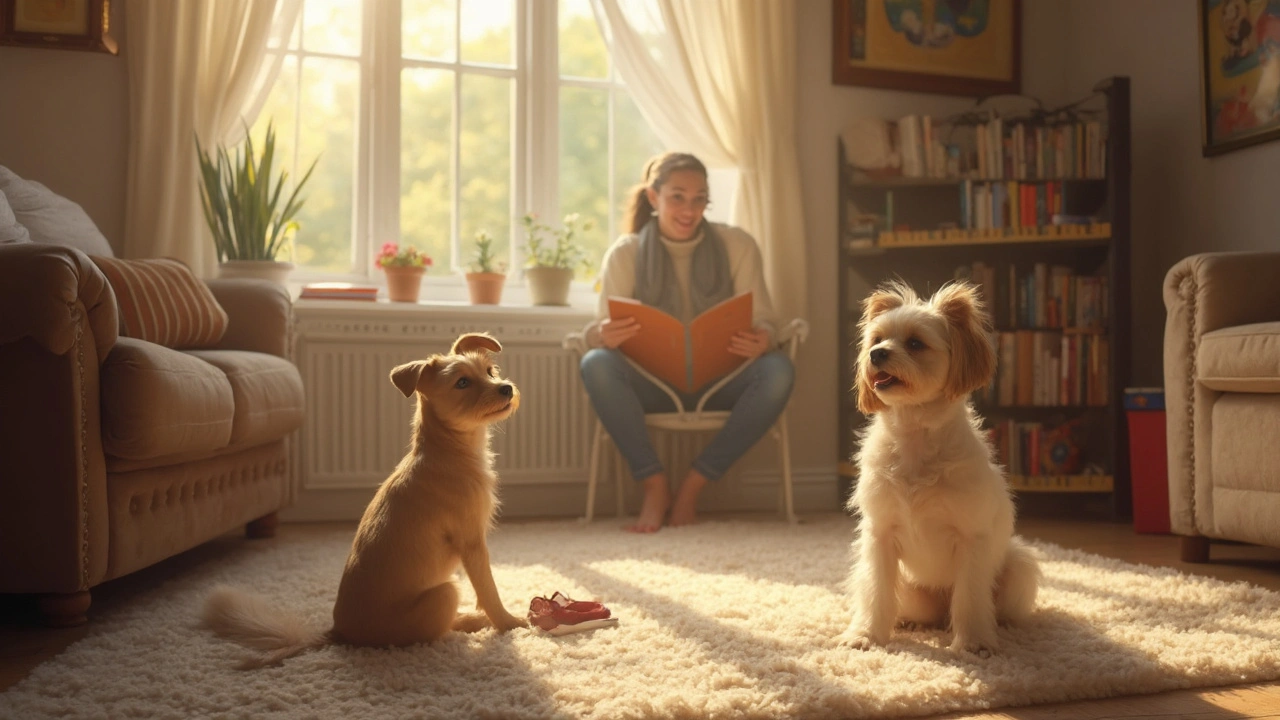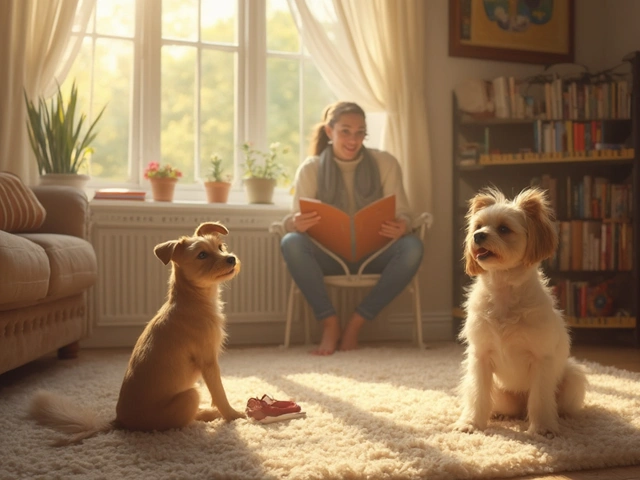Ever found yourself trying to binge-watch your favorite show while your dog decides to provide its own soundtrack? If barking seems to be your pup's favorite pastime, you're definitely not alone in this battle. It's probably the most common dog problem folks deal with.
Let’s start with why dogs bark, though. It's their main way of chatting or alerting us to something. Different barks mean different things – could be a warning, excitement, or just saying hi to the neighbor's cat. Understanding what's behind the bark is key to handling it.
Once you know why your dog is vocalizing, you can start tailoring strategies to manage it. From quick fixes like distraction techniques to long-term behavior training, there are plenty of ways to deal with the noise while keeping your pup happy.
Understanding the Bark
So, what's up with all the barking? To make life easier for both you and your furry friend, it's important to know what those barks actually mean. Some folks might think a bark is just a bark, but there's a lot more to it. Think of barking as a dog's all-purpose tool – they use it for all kinds of reasons.
First off, it's good to know that not all barks sound the same. There are different tones and pitches that dogs use. Quick and repetitive barking might signal excitement or a desire to get your attention, while a lower, growling bark could mean they're being protective or feel threatened.
Now, let's break it down further with a closer look at common types of barking and their meanings:
- Alert barking: This happens when your dog senses something unusual. It’s their way of giving you a heads-up. Often, this results in a sharp, repetitive bark.
- Boredom barking: If your pup is left alone without much to do, they might start barking just to have something going on around them.
- Attention-seeking barking: If your dog wants something (like food or a walk), they might start barking to let you know.
- Fear or Anxiety barking: This often happens when a dog is in a situation that makes them anxious or scared, such as a loud thunderstorm.
Understanding the context of your dog's bark also helps in choosing the right approach to address it. Like, if it's boredom barking, more playtime or physical activity might help. For fear, maybe a comforting presence or repetitive training can calm them down.
Studies suggest that excessive barking can affect the dog's well-being and even have impacts on the owner's stress levels. Finding the right balance can make a big difference in maintaining a peaceful home.
Why Dogs Bark
Understanding why dogs bark is like getting to the root of the problem. Each bark can mean something different, and once you grasp what's causing the noise, you're halfway to finding a solution. Let's break it down.
First off, barking is a dog’s way of expressing themselves. It's their form of communication with the world and, most importantly, with us. They could bark to greet you when you get home or to alert you to a visitor. Ever notice how your dog's bark changes? That's because they're using it to communicate different things. It's kind of their version of changing tones in a conversation.
Then, there’s territorial or alarm barking. If Fido's barking at the mailman or those pesky squirrels, he's likely guarding his turf. It’s an instinct for them to protect what’s theirs. On the flip side, there's attention-seeking barking. This is when your pup wants your focus, like when they're feeling bored or hungry.
Of course, separation anxiety is a biggie. Some dogs bark excessively when they're left alone, almost like they're calling out because of the stress of being apart from their humans. Then, there's the boredom factor. A bored dog is a barking dog, sometimes just trying to entertain themselves.
Last but not least, let’s not forget that barking can be learned. Yep, if Fido notices he gets a reaction out of you every time he barks, you’ve got yourself a trained little noisemaker, and guess who’s responsible for that?
Here's a quick rundown of reasons dogs might bark:
- Attention-seeking: Trying to gain your attention or tell you they need something.
- Alarm/territorial: Alerting you to perceived threats or guarding their domain.
- Anxiety: Barking due to stress or fear when left alone.
- Boredom: Vocalizing as a way to pass the time or entertain themselves.
- Excitement: Responding to playtime or a chance to go outside.
Understanding these triggers can help you figure out the kind of training or environmental changes needed to keep your home more peaceful. Remember, while barking is natural, knowing when it's excessive and what causes it can make a world of difference for both you and your dog.

Solutions for Peaceful Coexistence
So, you've got a barking buddy, and endless yapping isn't quite your jam. Let's tackle some solutions that will help keep the peace without losing your sanity—or your favorite slippers.
The first step in managing barking escort situations is setting clear boundaries. Dogs thrive on rules and routines, so having a consistent schedule for walks, feeding, and playtime can cut down on random barking.
Next up, let's look at environmental adjustments. Sometimes, dogs bark because they're stimulated by what's going on outside. Adding curtains or shades can reduce visual triggers, or you could create a cozy space away from all the excitement, like a comfy den.
Another tip? Keep your dog mentally and physically busy. Boredom can lead to excessive barking. Try interactive toys or puzzles that make them think, or increase their exercise time with extra walks or play in the yard.
For those stubborn cases, you might want to consider professional help. Dog trainers can provide personalized strategies to suit your situation. They’ve got expertise in behavior modification techniques, which can make a world of difference.
Consistency is key, folks. Whatever approach you take, stick with it. Habits don’t change overnight, so patience and persistence will pay off.
Training Tips and Tools
Taming the barking escort in your furry buddy might seem daunting, but with the right approach, it's totally doable. The goal is to teach your dog when it's okay to bark and when a little quiet time is needed. This way, your dog can still be its charming self without turning your living room into a barking concert.
Let's lay out some practical training steps. Remember, consistency is key here. It might take some time, but it'll be worth it.
- Positive Reinforcement: Reward your dog when it's quiet—that's the first step. Some tasty treats or a good belly rub can do wonders. It encourages better behavior without fuss.
- Commands: Introduce clear commands like "Quiet" or "Enough." Use a firm but calm voice. Reward them when they respond correctly. If you're new to this, start in a quiet space to avoid distractions.
- Structured Walks: Dogs need stimulation, and often barking is a sign of pent-up energy. Regular walks or playtime can help minimize unnecessary barking. Plus, it gives them a chance to release energy in a healthier way.
- Introduce Distractions: Use toys or puzzles when you're not available. Interactive toys can keep your doggos engaged and too busy to bark unnecessarily.
- Consult a Professional: If things get out of hand, an animal behaviorist can work wonders. They provide tailored strategies based on your dog's specific needs.
Now, let's talk tools. There are gadgets out there designed to help manage barking without being harsh. Devices like ultrasonic bark deterrents are popular choices. They emit sounds only dogs hear, prompting them to stop barking. However, always research and ensure it's safe for your pup.
Not every method suits every dog, though. Be patient and observant. Which technique works best for your companion is sometimes as individual as dog personality gets.






